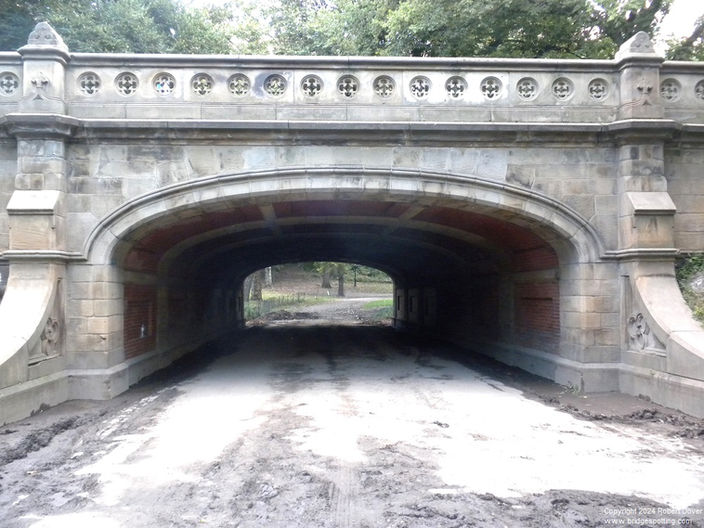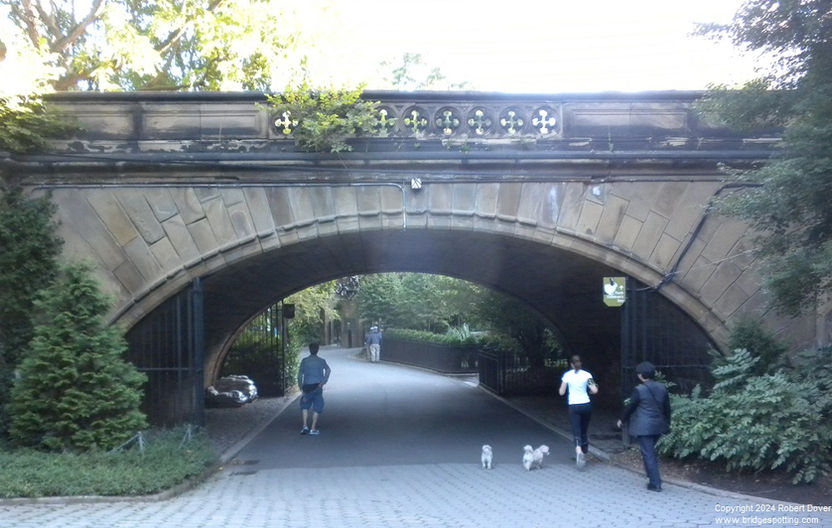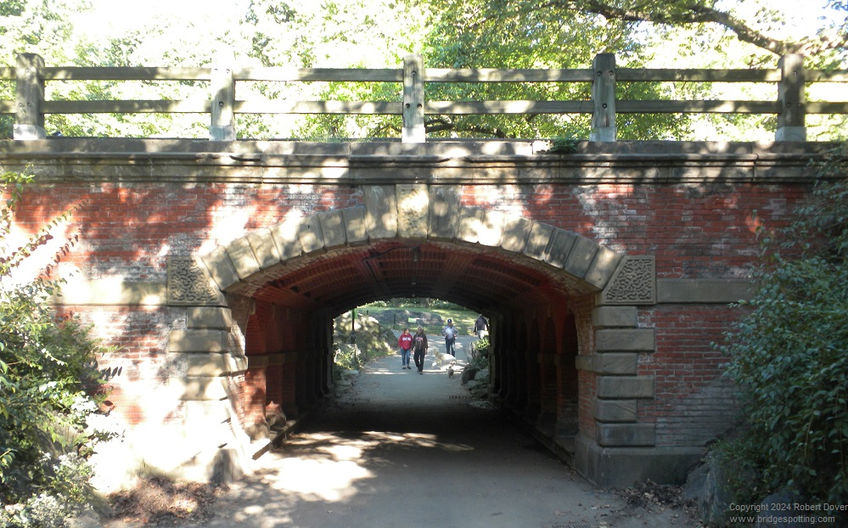Photographs of the Bridges
Central Park Bridges, New York City
Probably the world’s largest collection of decorative miniature park bridges is in Central Park, in New York City. The only way to see these bridges is to set out on foot, onto the hiking paths of the park. This is because everywhere that a hiking path crosses under one of the interior surface roads or over a stream or part of a lake, there is a small, amazing, elaborately decorated bridge, almost all of them dating from the 1860s.
The bridges fall into distinct structural types based on their construction materials, methods, and manner of decoration. The most common type is the decorated stone arch bridges, which are found wherever the interior road system crosses a hiking path. There are 14 of these scattered throughout the park, with the bulk of them concentrated south of the Central Park Lake. These bridges are called Greyshot, Dalehead, Dipway, Green Gap, Greywacke, Winterdale, Driprock, Playmates, Inscope, Willowdell, Trefoil, Glade, Denesmouth, and Springbanks Arches. The decorated stone arches are all the same size and construction type. Most of them cross a hiking path that is only about ten feet wide, they all carry interior surface roads that are about 25 feet wide, and they were all designed to allow passage of a horse and small carriage. The most important feature of these tiny bridges is that their archways, interiors, and railings are elaborately decorated. The decorations are unique to each bridge and involve different stone types, colors, and textures, mixtures of stone and brick, and intricate stone carving. These are 14 completely unique works of art in stone and brick, each of them about 150 years old.
In addition to the decorated stone arches carrying the interior road system over the hiking paths, the park has six rustic, undecorated stone bridges. In contrast to the decorated stone arches, the rustic stone bridges are mostly made of a single type of stone, with the blocks having a uniform, rough texture. Although they are simple and undecorated, these are not unattractive bridges by any means. Even gray, unadorned stone blocks can be arranged in graceful arch shapes, and their locations over or near water are especially scenic.
Possibly the most spectacular are five cast iron arch bridges dating from the early 1860s. These are probably the greatest collection of decorated cast-iron arch bridges in the United States, and possibly in the world. Each of the bridges is constructed of a single sweeping iron arch and railings, intricately decorated with curlicue designs and geometric patterns, and enhanced by the use of different paint colors to highlight various parts of the structure.
There is a detailed description of a full tour of all here is a detailed description of a full tour of all 30+ bridges in Central Park in Chapter 9 of my book, Bridgespotting Part 2: A Guide to Even More Bridges that Connect People, Places, and Times.

























